Removing Webpages
Don’t just “Delete”!
When removing one or more entire pages from a website (e.g. when eliminating an academic program), don’t just hit “Delete” in Cascade! There are several steps to avoid leaving behind dead links and other references to the removed page(s).
- Deletion of the page/content should be done last, after all references and links to the soon-to-be-gone item have been handled, including those references outside of your control.
- Never delete or modify any Catalog content (Detroit Mercy Main Site : /academics/catalog) even if a program, course, etc. is no longer available. Published catalogs are legally-binding documents that must stay as they are.
- When you do finally delete a page, make sure to activate the “Unpublish” option to actually remove the deleted page from the live Web server.
- The page-removal process can also apply when removing significant content within a page, (i.e. when the page itself will remain).
- It’s not only links that need to be updated. Sometimes, page text will refer to other content without linking to it. Such text references should also be edited before the content’s deletion.
Removal process
If “Page X” is the page to be removed:
Part 1: Find links and references
Before deleting Page X, start by finding content that links or refers to Page X. You should create a list of pages and content that you’ll need to edit before deletion.
Internal Links
In Cascade,
- Click on Page X
- Click l (lowercase L) to view the page's relationships, or pages the site or file is linked on.
- You need to update/edit each page listed there so they no longer link or mention Page X.
External Links
Other kinds of links – including “External” Cascade links – will not be listed as internal links or relationships. (For this and other reasons, Cascade pages should always be linked together using Internal links.) Unfortunately, users commonly misuse External links instead, so the internal links list cannot be assumed to be a full list of Cascade pages linking to Page X.
To find additional links and references to Page X, go to the live website and use site search (the Google custom search at the top of every page), Search for phrases that a link or reference to Page X would contain, such as key words in Page X’s page title.
After using this methods to find the links and references, you need to edit and and handle these links and references.
Part 2: Handle links and references
After you have created a list of pages and content that link/refer to Page X, use Cascade to edit the referring pages. If your list includes pages you cannot edit, contact the people in charge of those pages and/or the MarCom Web Team.
For each instance you can edit, choose one of the options below, according to whether the reference is a link or just text. In all cases: never leave dead links (i.e. links to Page X).
Link options
- Remove the link.
- Update the link to go to a different appropriate page.
- Note: Some pages automatically include links to other pages or files. If you find you can't edit something, contact MarCom.
Text options (non-link references)
- Remove the text reference completely.
- Edit the text reference to eliminate visitors’ expectation of finding the deleted content.
- Leave the text reference in place where there is historical or archive value. For example, you would not remove text references to a person or program from an older news article, even if that person or program were no longer at the University. However, you would remove/update any links to non-existent pages/content.
Part 3: Update referring pages on the live website
Make sure you publish all pages in which links and text references were edited.
Were any special URLs set up for the content to be deleted?
These are known as vanity, shortcut, custom, or redirect URLs, or, technically, “Web server rewrites”. A list of such custom URLs is available from ITS Web Services. Any existing custom URLs should be either eliminated or – preferably – set to redirect users to an appropriate alternative destination URL. Only ITS can update or delete custom URLs from the Web server. Please fill out a helpdesk ticket for ITS Web Services to update/remove any special URL rewrites.
Part 4: Delete the page
By this point in the process, you have:
- found and handled all links and references to Page X
- updated and republished referring pages and navigation elements on the live website
- identified and handled any custom URLs set up by ITS
You can delete the page or file:
- Edit Page X > click the More Tab > Click Delete
- Make sure Unpublish is selected for all outputs destinations
- Click Submit
Part 5: Remove the page from website navigation menus and automatic index pages
Next, the website navigation assets must be republished, so that the page will be removed from the navigation menus on the live site. The navigation will auto-publish every night after work for all the day's changes, but if you have access, publish the following two pages in the same Cascade site as Page X:
- /_cms-includes/header
- /_cms-includes/navigation
If you do not have access to publish these items, they will auto-publish every evening.
Contact us if you need help
Contact the Web Team in Marketing & Communications to perform a final “deep dive” search directly on the Web server, create a Web Request, and provide them the URL/path you need removed, and/or any custom URLs.
